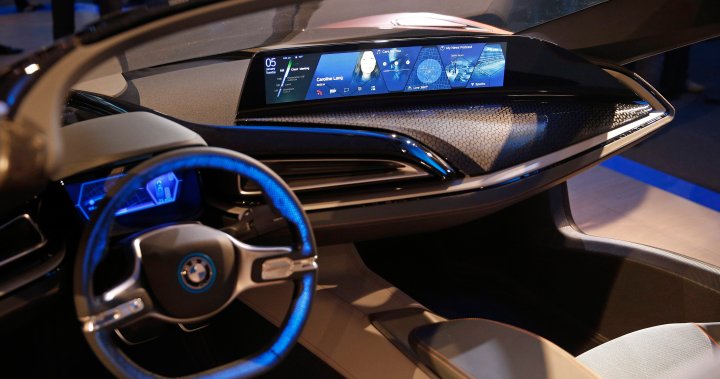I still remember the Delco AM radio in my dad’s 1973 Oldsmobile Delta 88 that sat smack in the middle of the dash with its two knobs. The one on the left set the volume as well as turned it off and on. It had an inner ring on the same knob stalk that controlled “tone” (left to turn down the bass and right to turn up the treble; it was useless). The one on the right was for tuning in stations. Cranking it sent an indicator across the dial.
Once you found the station you were looking for, you pulled out one of the five slat-like buttons on the front of the unit and then pushed it all the way back in, mechanically creating a memory for the tuning indicator. When you had all five buttons programmed, flipping from station to station was as easy as pushing the corresponding button which responded with a hearty ka-CHUNK.
There was a lot of fighting over that radio because it was the only entertainment device available in the car. How times have changed — and continue to change.
I was reminded of that old Delco while attending a couple of panels at Canadian Music Week in Toronto this month. Dashboard times are a-changin’ and changin’ fast.
As manufacturers and dealers pivot away from ICE (internal combustion engines) to electric vehicles, they’re also looking for new ways to monetize their vehicles. For example, dealers are going to be heavily impacted in the area of after-sales service, the part of the business that brings in most of the revenue.
With electric vehicles, there are no oil changes, radiators to fix, belts to replace, injectors to clean, exhaust systems to replace, and spark plugs to change. Sure, there are still the mechanics of the electric motors that need attending along with tires to swap, bodywork to repair, and brakes to maintain, but overall, electric vehicles should need less service than ICE vehicles.
That lost ICE revenue needs to be made up somewhere. And that somewhere is going to be the dashboard.
More on Entertainment
Manufacturers worldwide are looking at new ways to monetize the experience of being in a vehicle, not just for the driver but for all the passengers, too. And it all comes down to data. More and more vehicles are coming with cellular connections, linking them to the exchange of all kinds of data with the cloud. Cars are increasingly big computers on wheels run by millions of lines of code and for them to work properly, they need to be connected to the internet.
We’re starting to see the introduction of what’s known as “pillar-to-pillar displays,” basically one long electronic ribbon extending from the driver’s side door to the passenger door. The driver will still have all the usual dials and indicators (virtual ones) while the passenger will be invited to engage in their own displays: vehicle analytics, navigation maps, video screens for watching things like YouTube and TikTok, and more. Mercedes S-Class and the company’s EQS EV are already deep into this territory as is Porsche’s all-electric Taycan. Hyundai/KIA isn’t far behind. I’ve driven all of them and it’s pretty sexy.
Yes, we have CarPlay and Android Auto, but after years of ceding dashboard connectivity to Apple and Google, automakers are swinging back to proprietary systems that they can control — and from which they can harvest all kinds of user data. And by controlling the dashboard, automakers and their partners will start selling services and features as subscriptions.
Satellite radio has been delivered this way for decades. I’ve used the example of BMW’s heated seats subscription. The car comes with the mechanics installed. However, you can’t turn them on without paying a monthly fee. Think about the other options you have in your current vehicle. Which ones could be ruled remotely and only usable if you pay?
But this is just the beginning. The next version of the BMW 5-Series will offer a Tivo option, meaning that passengers, each with their own individual screen, will be able to access all kinds of streaming TV and recorded TV. That’s a far cry from minivan DVD players, isn’t it?
Which brings me back to Dad’s old Delco. Radios have long been standard equipment, offering free news, information, and entertainment. As vehicles become more connected, AM/FM radio will be delivered via IP (internet protocol) instead of over the air from a transmitter and tower, meaning that it will be streamed to the car using cellular data and then interpreted by software instead of an old-school antenna and tuners. Data costs money, of course. And because the manufacturer controls which software goes in the dashboard, the chances of us having to subscribe to a radio tuner package is pretty much a slam-dunk.
First, the bad news. Local radio will no longer be free and unlimited. Second, with all the other subscription offerings that will be available, radio runs the risk of getting lost in a multitude of news/entertainment choices. Today’s broadcasters will have to figure out what to do about that.
But there is also some good news. AM/FM radio is a one-way medium. By switching delivery to IP, cars and their occupants will have two-way communication with the broadcaster, paving the way for on-demand and personalized offerings. Real-time listening will still be a thing but there will be more curation opportunities for parties on both sides of the interface, not to mention advertising. I’m currently working with a company that envisions drivers calling up a display for, say, Tim Hortons, to order your double-double and old-fashioned glazed even before you hit the drive-through. If that’s your regular order, the car will even call ahead as you approach your usual location without you having to do anything.
And then there’s the thorny problem of audience measurement. Compiling radio ratings has always been imperfect with results subject to wild and inaccurate swings. IP delivery of radio will allow for pinpoint determinations of who is listening to what and when — at least within the environment of the vehicle. I saw a demonstration of a system called DTS Soundstage that generates real-time dynamic heat maps of people listening to specific radio stations in their cars. Again, if you’re a broadcaster, this is the kind of accuracy and granularity you’ve been dreaming about when it comes to your audience’s habits and movements.
How long before all this happens? Not as long as you may think. The average age of a car on Canadian roads is around 11 years; more impactfully, it’s 12.5 years in the U.S. As old analogue vehicles disappear from the roads, pushed by government demands for more EVs, we’ll see a wholesale change in the look, function, and cost of vehicle interiors in the early 2030s. Start budgeting now.
—
Alan Cross is a broadcaster with Q107 and 102.1 the Edge and a commentator for Global News.
Subscribe to Alan’s Ongoing History of New Music Podcast now on Apple Podcast or Google Play
© 2023 Global News, a division of Corus Entertainment Inc.



